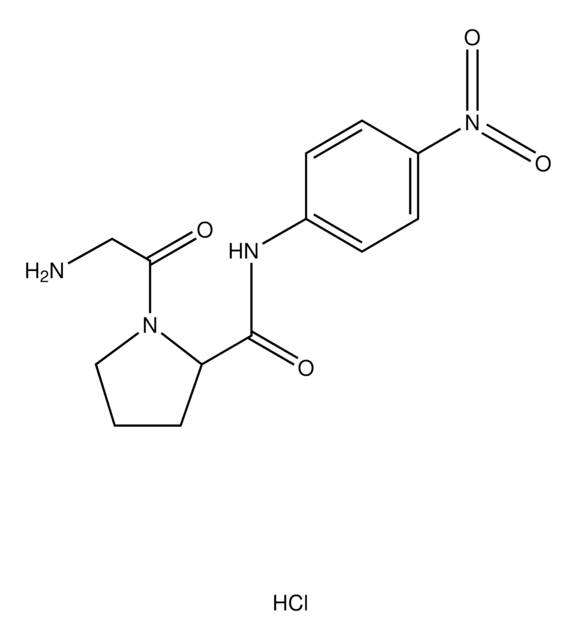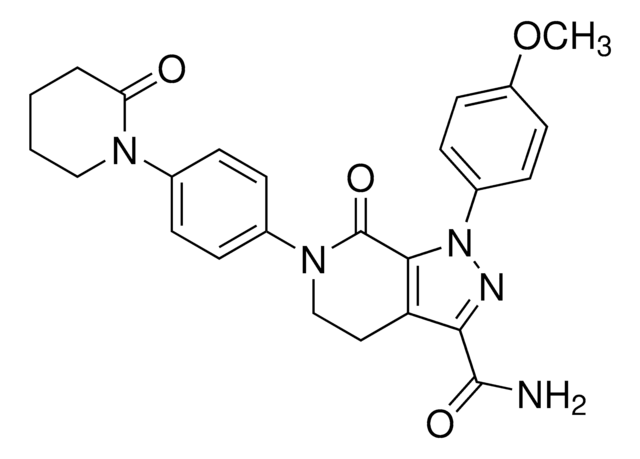H1911
N-(4-Hydroxyphenyl)-arachidonylamide
≥98%, ethanol solution
Synonim(y):
AM404
About This Item
Polecane produkty
Poziom jakości
Próba
≥98%
Postać
ethanol solution
Warunki transportu
wet ice
temp. przechowywania
−20°C
ciąg SMILES
CCCCC\C=C/C\C=C/C\C=C/C\C=C/CCCC(=O)Nc1ccc(O)cc1
InChI
1S/C26H37NO2/c1-2-3-4-5-6-7-8-9-10-11-12-13-14-15-16-17-18-19-26(29)27-24-20-22-25(28)23-21-24/h6-7,9-10,12-13,15-16,20-23,28H,2-5,8,11,14,17-19H2,1H3,(H,27,29)/b7-6-,10-9-,13-12-,16-15-
Klucz InChI
IJBZOOZRAXHERC-DOFZRALJSA-N
informacje o genach
human ... CNR1(1268) , CNR2(1269)
mouse ... Cnr2(12802)
rat ... Cnr1(25248) , Faah(29347) , Trpv1(83810)
Zastosowanie
Inne uwagi
Hasło ostrzegawcze
Danger
Zwroty wskazujące rodzaj zagrożenia
Zwroty wskazujące środki ostrożności
Klasyfikacja zagrożeń
Eye Irrit. 2 - Flam. Liq. 2
Kod klasy składowania
3 - Flammable liquids
Klasa zagrożenia wodnego (WGK)
WGK 2
Temperatura zapłonu (°F)
55.4 °F
Temperatura zapłonu (°C)
13 °C
Środki ochrony indywidualnej
Eyeshields, Faceshields, Gloves, type ABEK (EN14387) respirator filter
Certyfikaty analizy (CoA)
Poszukaj Certyfikaty analizy (CoA), wpisując numer partii/serii produktów. Numery serii i partii można znaleźć na etykiecie produktu po słowach „seria” lub „partia”.
Masz już ten produkt?
Dokumenty związane z niedawno zakupionymi produktami zostały zamieszczone w Bibliotece dokumentów.
Nasz zespół naukowców ma doświadczenie we wszystkich obszarach badań, w tym w naukach przyrodniczych, materiałoznawstwie, syntezie chemicznej, chromatografii, analityce i wielu innych dziedzinach.
Skontaktuj się z zespołem ds. pomocy technicznej








